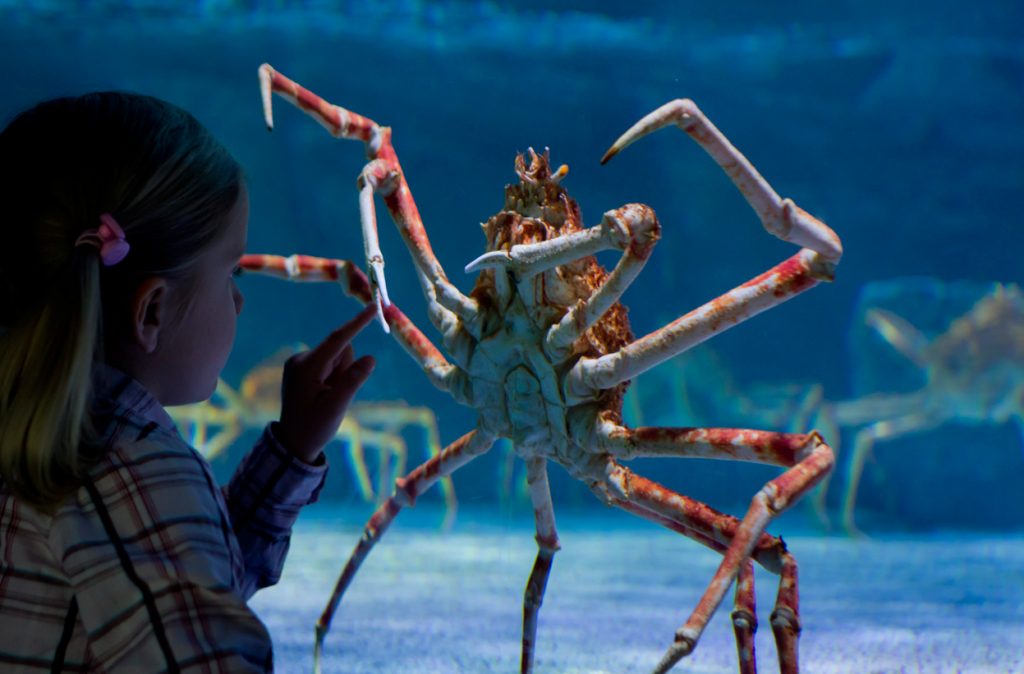The Japanese spider crabs natural habitat is on the bottom of the Pacific Ocean (some 300 – 400 metres deep) around the Japanese archipelago, where it feeds on dead animals and shellfish. They often live in the seabed at depths of 150 – 800 metres, however, they are found most prominently in depths of 200 – 300 metres. In spring, they can often be found laying eggs in waters as shallow as 50 metres.

Mating takes place with the ventral surfaces of the crabs opposing each other and occurs as soon as the female completes her molt. Fertilization is internal. The females abdomen is wider than the males, as in most crabs, to provide space for the brooding egg mass. Eggs are generally laid shortly after mating.
The Japanese spider crab is believed to have a life expectancy of up to 100 years. It is a particularly old species of crab and it is often referred to as a living fossil.















